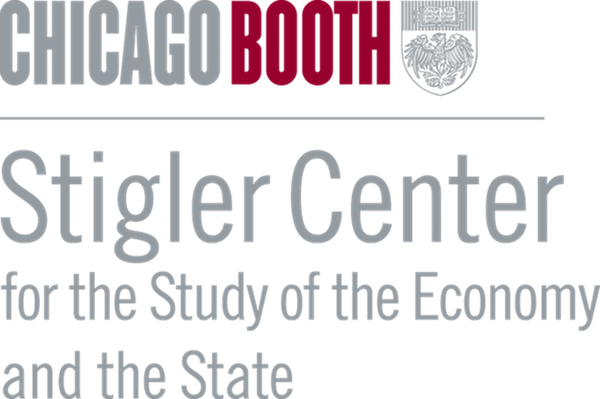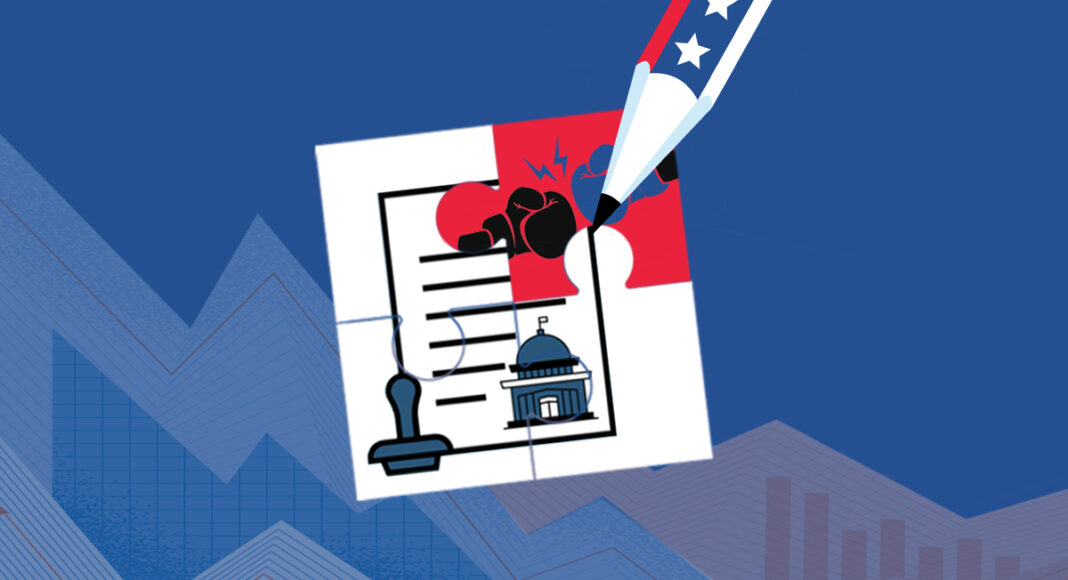Bill Baer argues that the United States’ history with promoting national champions through industrial policy shows how protection and the diminution of competition often backfires on the favored companies and the state. He writes that industrial policy must complement competition policy.
The European Union is currently debating whether economic policy should promote national champions—enabling European firms to better compete internationally—even if that means diminishing domestic competition. The United States has grappled with this same issue over the years and is currently weighing similar questions in industries, such as defense, semiconductors, and electric vehicles. Its experience suggests that an industrial policy which picks and promotes national champions and insulates them from domestic competition, however tempting, should be pursued with caution on both sides of the Atlantic.
A national champion refers to a large corporation that receives various forms of state support and encouragement in the hope that it will better compete on the global stage. These firms are often seen as symbols of national pride and economic strength, found in sectors such as energy, technology, telecommunications, transportation, and defense—industries considered vital to national security and economic stability. Sometimes the approach includes financial support, tax breaks, loosening of regulatory oversight, and tariffs on foreign competitors. Often it involves allowing, indeed encouraging, consolidation in domestic markets in the hope of creating larger firms better positioned to succeed internationally. Proponents of domestic consolidation argue that a larger firm will achieve economies of scale, innovate more effectively, and withstand global competition more robustly than its smaller counterparts. National champions offer a way for governments to reap political and economic benefits from an interventionist model, thus boosting the authorities’ legitimacy by presenting these companies as success stories that reflect the nation’s strength and capability.
Creating a national champion is tempting, yes. However, the U.S experience shows that promoting them comes with risks. Protecting companies from competition can lead to inefficiencies, complacency, and stagnancy. Ultimately, these firms may struggle to remain competitive in the global marketplace.
America’s history of national champions
Look first to the U.S. government’s long-standing effort to promote Pan American World Airways (PanAm) and Trans World Airlines (TWA) as its national flag carriers. While these carriers were (for the most part) not directly subsidized, they benefited significantly from fare regulation and indirect government support in the form of favorable route allocations, mail contracts, military transport agreements, and limits on foreign carrier access to the U.S. For decades the two airlines dominated air travel to and from the U.S. PanAm, in particular, was seen as a U.S. foreign policy tool, helping expand American influence abroad. But their reliance on indirect subsidies and a protectionist regulatory environment made them ill-equipped to survive, much less thrive, in the competitive climate unleashed by deregulation. The Airline Deregulation Act of 1978 opened the industry to competition, reducing the protective advantages the two flag carriers had long relied on. PanAm faced growing financial uncertainty, struggling to secure capital for new, long-range aircraft necessary to compete in an increasingly crowded international marketplace. In the end, PanAm’s inability to adapt to the competitive pressures of deregulation led to its demise in 1991.
While it took a bit longer, TWA also failed in a competitive world. Aviation pioneer Howard Hughes had been the principal stockholder and guiding force behind TWA from 1939 until 1960–61, when he lost control of the airline to financial institutions that had financed its jet purchases. After reorganizing under Transworld Corp. in 1979 and selling to the public in 1984, TWA was acquired by investor Carl C. Icahn in 1985. Despite buying Ozark Air Lines in 1986, the airline could not escape its financial woes and filed for bankruptcy in 1992. Like PanAm, TWA could not compete without government largesse in a deregulated global market, ultimately failing in 2001.
AT&T provides another lesson. For much of the 20th century, AT&T operated as a regulated monopoly in the U.S., justified on the grounds that it provided universal service and stabilized the nation’s communications infrastructure. However, the Justice Department challenged this dominance, suing AT&T in the 1950s for stifling innovation. A 1956 consent decree forced AT&T to surrender its monopoly on technology by licensing its patents royalty-free, sparking innovation competition in the nascent computer and microprocessor industries. A subsequent DOJ challenge to its monopoly in telecommunications led to the 1982 consent decree that broke up AT&T into distinct local service providers, nicknamed “Baby Bells.” The slimmed down AT&T retained its long distance operations but struggled in this newly competitive environment, losing ground to companies like MCI and ultimately was acquired by one of the ‘Baby Bells’ that created in the 1982 consent decree. As historian Richard John argues, AT&T’s decades-long public relations campaign, shaped by figures like Theodore Vail, promoted a “network mystique“ that masked the political machinations behind its dominance, and rendered it vulnerable in a competitive environment. Reliance on regulatory protection can create vulnerabilities, leaving once-dominant firms ill-equipped to compete in a free market.
Sometimes a domestic market loses its competitive edge with only modest government involvement. Look to the U.S. automotive industry, where in the post-WWII environment, a cozy oligopoly of the “Big Three” automakers—General Motors (GM), Ford, and Chrysler—came to dominate the U.S. auto market. Lax merger enforcement arguably played a role. As the three dominant firms faced little competition, they became complacent and failed to adapt to changing consumer preferences and technological advancements. By the 1970s and 1980s, their complacency came at significant cost. Foreign competitors, particularly from Japan, began to capture an increasing share of the U.S. market with more fuel-efficient, reliable, and affordable vehicles. Despite efforts by the U.S. government to limit foreign competition—such as the 1981 voluntary export restraint agreement with Japan and the longstanding 25% “Chicken Tax” on light trucks—the Big Three struggled to compete. These protectionist measures failed to stave off the growing success of foreign automakers: the U.S. automakers lost market share and for decades faced significant financial challenges.
The U.S. Defense Department has also seen the negative effects of consolidation. Today, just four major firms—Boeing, Lockheed Martin, Northrop Grumman, and Raytheon—dominate the defense sector, despite periodic efforts by Department of Justice and Federal Trade Commission to question and challenge consolidation. Concentration of power has reduced competition, limited innovation, and made the defense industry more vulnerable to supply chain disruptions. FTC Chair Lina Khan’s March 2024 remarks at the Carnegie Endowment for International Peace underscored this risk. She also referenced Boeing’s present-day challenges in the commercial aviation market, tracing them to the company’s acquisition of McDonnell Douglas, its only domestic competitor, in the late 1990s. Khan argued that while consolidation may seem like a way to boost competitiveness, but in reality, it can stifle innovation and increase financial risks.
The reemergence of the national champions debate
For a while, industrial policy fell out of fashion in the U.S. However, more recently competition, particularly from China, reenergized the debate in the nation. In response, the U.S. has not relaxed merger enforcement to bolster national champions. Instead, beginning in 2022, the Biden administration passed a series of industrial policy bills that included investments in strategic industries, creating incentives for strategic fields to grow without sacrificing competitive vigor. Under the Biden administration, U.S. antitrust enforcement is at or near record levels. The CHIPS Act, focused on boosting semiconductor manufacturing by providing $52.7 billion dollars for research, development, manufacturing, and workforce development in the fields of nanotechnology, clean energy, quantum computing, and AI. The act also funds regional technology hubs and promotes wireless supply chain innovation all in effort to maintain development of innovative technologies in the U.S. Similarly, the Inflation Reduction Act (IRA) allocated $370 billion dollars to accelerate the innovation and deployment and of clean energy without undermining competition. The IRA extended tax credits for renewable energy projects, establishing a $27 billion Greenhouse Gas Reduction Fund for low-income communities, offering $10 billion in advanced energy manufacturing credits, and funding $40 billion in clean energy project loans. Additionally, it offered up to $7,500 in tax incentives for electric vehicles and dedicated funding for environmental justice and Tribal clean energy projects, all while ensuring a competitive, diversified clean energy market aimed at reducing emissions and strengthening U.S. supply chains. These measures prove that it’s possible to strengthen domestic industries by fostering innovation and investment without insulating companies from domestic competition, ensuring that market forces still drive progress.
In the EU, which has struggled to compete against both China and the U.S., the conversation over national campions gained currency in 2019, when the European Commission blocked a merger between France’s Alstom and Germany’s Siemens, two leading railcar manufacturers. The decision was unsurprising—the combined company would have dominated the market in Europe and elsewhere. However, leaders like Federal Minister for Economic Affairs and Energy Peter Altmaier of Germany and President Emmanuel Macron of France argued that Europe should allow mergers to create national champions capable of competing with the U.S. and China. Macron even pledged to “recreate competition policy” to facilitate domestic consolidation in the future.
The question now is whether Europe’s current leadership believes that facilitating domestic consolidation needs to be part of its approach in promoting national champions. In some respects, their actions to date mirror the incentives approach favored by the U.S. For example, the European Commission has made comparable types of investments in strategically important sectors like the Green Deal Industrial Plan (GDIP) and the European CHIPS Act. The GDIP focuses on fostering innovation and investment in green technologies, aiming to maintain Europe’s competitiveness in industries crucial for the clean energy transition, including financial support for clean energy projects. The plan offers a framework to attract investments while avoiding protectionist measures that would stifle competition within the EU market. Similarly, the European CHIPS Act, launched to address vulnerabilities in semiconductor supply chains, mobilizes over €43 billion in public and private investments. It is designed to boost Europe’s share of global semiconductor production without resorting to insulating domestic companies from competition, much like the U.S. CHIPS Act.
The European Commission’s initiatives are steps in the right direction. However, while these efforts aim to foster growth and competitiveness without stifling competition, some in Europe argue they don’t go far enough to create competitive enough firms to stand against China or the U.S. Newly reelected European Commission President Ursula von der Leyen recently seemed to be advocating for a shift from competition enforcement to policies that favor the creation of national champions. There is support for her position. Former Italian Prime Minister Mario Draghi released a report in September arguing for consolidation in some strategic markets, such as telecommunications.
Critics of national champion policies point to the U.S. experience as a cautionary tale. Max von Thun argues in ProMarket that Europe’s problems—such as geopolitical challenges and economic fragmentation—will not be solved by weakening competition policy. A recent EU report found that market concentration is already increasing in Europe, while business dynamism is declining. The report emphasized that firms exposed to competition domestically are more productive and competitive internationally.
As Margrethe Vestager, the European Commissioner for Competition puts it: “Local champions… are competitive abroad when they are pushed to be efficient, lean, and innovative because they are faced with competition at home.” Instead of gutting antitrust protections, policies should focus on fostering innovation and competitiveness organically as the U.S. did by passing the CHIPS and IRA Acts.
Both the U.S. and Europe are indeed at a crossroads. As Jack Malamud and I noted in a recent blog post on the EU debate, promoting growth and competitiveness in a global market is a legitimate goal, but gutting competition policy is not the solution. The U.S. experience shows that targeted government support and robust competition policy best drive innovation and ensure long-term competitiveness. Both the U.S. and Europe should adopt policies that incentivize growth while maintaining their competitive edge, avoiding the hard lessons the U.S. learned over the years.
Author’s Note and Disclosure: The author thanks his Brookings colleague Isabella Panico Hernández for her assistance. Brookings is grateful for the support of the Omidyar Network. The findings, interpretations, and conclusions in this publication are solely those of the author. Brookings is committed to quality, independence, and impact in all its work. Activities supported by its donors reflect this commitment and the analysis and recommendations are solely determined by the scholars. You can read our disclosure policy here.
Articles represent the opinions of their writers, not necessarily those of the University of Chicago, the Booth School of Business, or its faculty.






